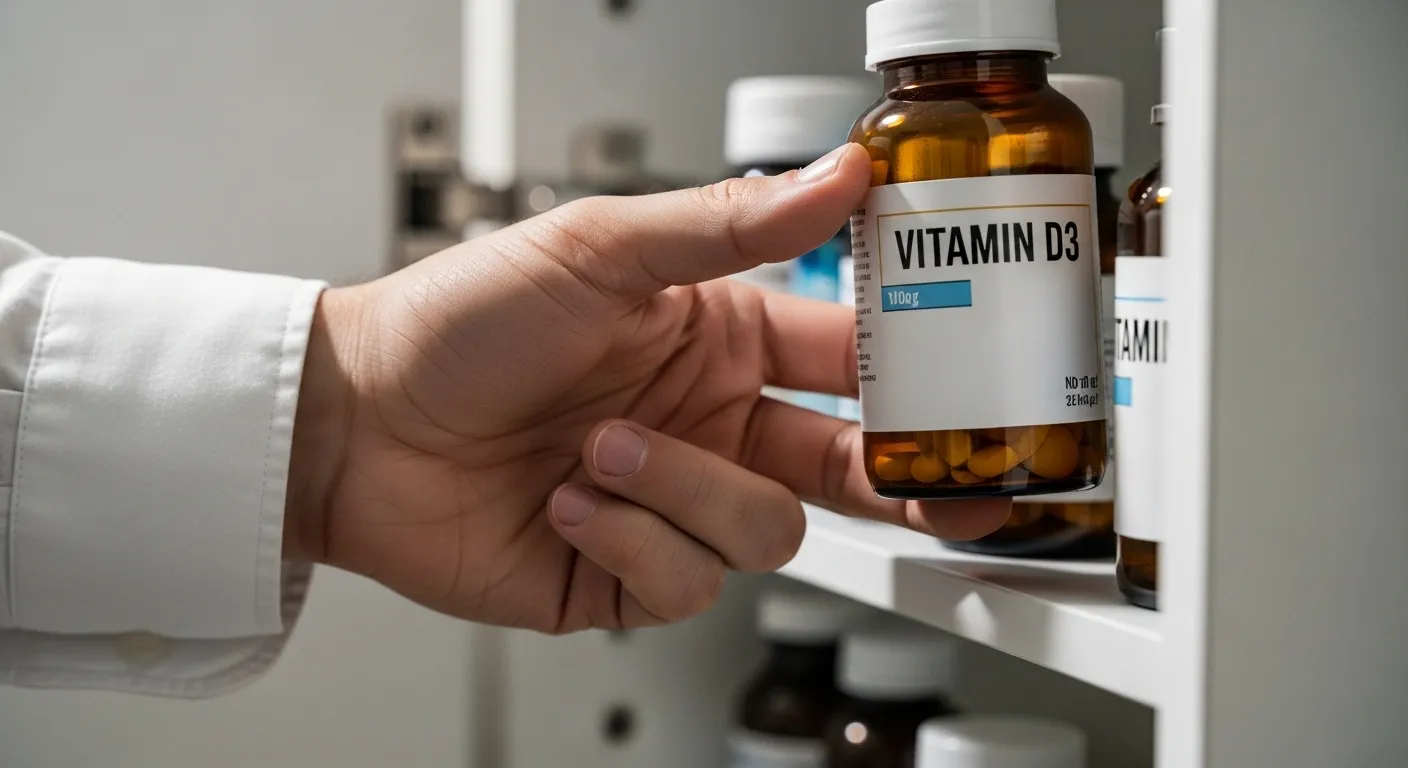
Step 5: The Power of Clear, Large-Print Labels
If containers are the walls of your organizational system, labels are the street signs. They are a non-negotiable step, especially for medication safety. Labels remove all guesswork, which is critical when you’re feeling unwell, in a hurry, or when another family member needs to find something. They transform a tidy cabinet into a truly functional system.
Labeling Best Practices for Senior Safety
For older adults or anyone with vision challenges, the type of label you use matters. Clarity is paramount.
Use large, bold, high-contrast font. If you’re using a label maker, choose a simple, sans-serif font (like Arial or Helvetica) and print it in the largest possible size. Black text on a white or light-colored background is the easiest to read. If you’re handwriting labels on tape, use a thick, black permanent marker and write in clear block letters.
Label the container or the shelf, not the product. The products themselves—the pill bottles and ointment tubes—already have crucial information printed on them. Your job is to label the “home” where these items live. Label the front of the bin, tray, or the edge of the shelf. This way, when you take an item out to use it, you know exactly where it goes back.
Keep labels simple and general. You don’t need to list every item in the bin. Use broad category names that make sense to you. Good examples include: “FIRST AID,” “PAIN & FEVER,” “ALLERGY,” “DAILY AM,” “DAILY PM,” “EYE CARE,” or “DENTAL.”
The Vital Medication List
Beyond labeling your containers, creating a comprehensive medication list is one of the most important safety actions you can take. This document is a vital reference for you, your family members, and medical professionals in an emergency. It provides a complete, accurate picture of your health regimen at a single glance.
Your list should be typed or written in very clear, legible handwriting. For each medication and regular supplement you take, include the following information:
Medication Name: Include both the brand name (e.g., Tylenol) and the generic name (acetaminophen).
Dosage: How much you take (e.g., 500 mg).
Form: Whether it’s a tablet, capsule, liquid, or injection.
Frequency: How often you take it (e.g., twice daily, once at bedtime).
Purpose: The reason you are taking it (e.g., for high blood pressure, for pain).
Prescribing Doctor: The name and phone number of the physician who prescribed it.
Once you’ve created this list, make several copies. Keep one taped to the inside of your medicine cabinet door. Give a copy to a trusted family member or friend. Keep another copy in your wallet or purse. You should also include it in a “grab-and-go” binder with other important documents. For more information on building an emergency kit and a document binder, you can find excellent checklists at Ready.gov. Review and update this list every six months or anytime your prescriptions change.

















